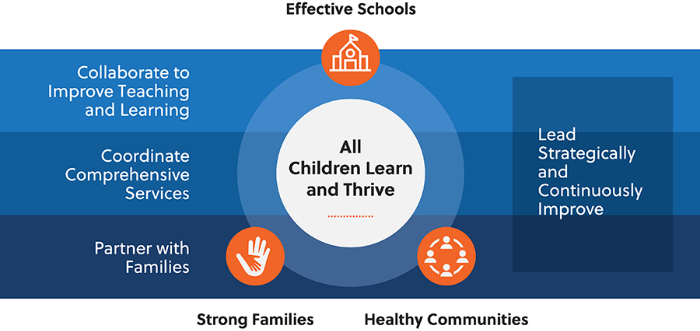
The First 10 Theory of Action outlines the goals and objectives that First 10 Schools and Communities should support, the kinds of schools and community institutions they are trying to build, and the roles these partnerships play in supporting these goals.
A theory of action tells a story about how a package of strategies is expected to lead to positive outcomes, creating what some have called a causal story line (City et al., 2009). In effect, a theory of action is a hypothesis: We believe that these activities will lead to these outcomes, which can be tested over time. In this way, the theory serves as a guide for how a group of strategies can be implemented in such a way that together they form a coherent, consistent approach (Argyris & Schön, 1978; City et al., 2009).
Theories of action are often summarized as “if-then” statements that convey the causal storyline underlying the expected link between action and outcomes. The First 10 Theory of Action, depicted graphically above, outlines how First 10 initiatives can create a virtuous circle among families, schools, and communities—an ongoing process in which each supports the others in a mutually reinforcing cycle. The First 10 Theory of Action can be summarized as follows:
If First 10 School Hubs and Community Partnerships implement three core strategies across the early childhood–elementary school continuum:
- Collaborate to improve teaching and learning
- Coordinate comprehensive services
- Partner with families in culturally responsive ways
And as partnerships lead strategically and continuous improve the implementation of these strategies with the aim of promoting a virtuous circle of collaboration and improvement among:
- Effective schools
- Strong families
- Healthy communities
Then communities will promote educational equity and close opportunity gaps, and all children will learn and thrive.